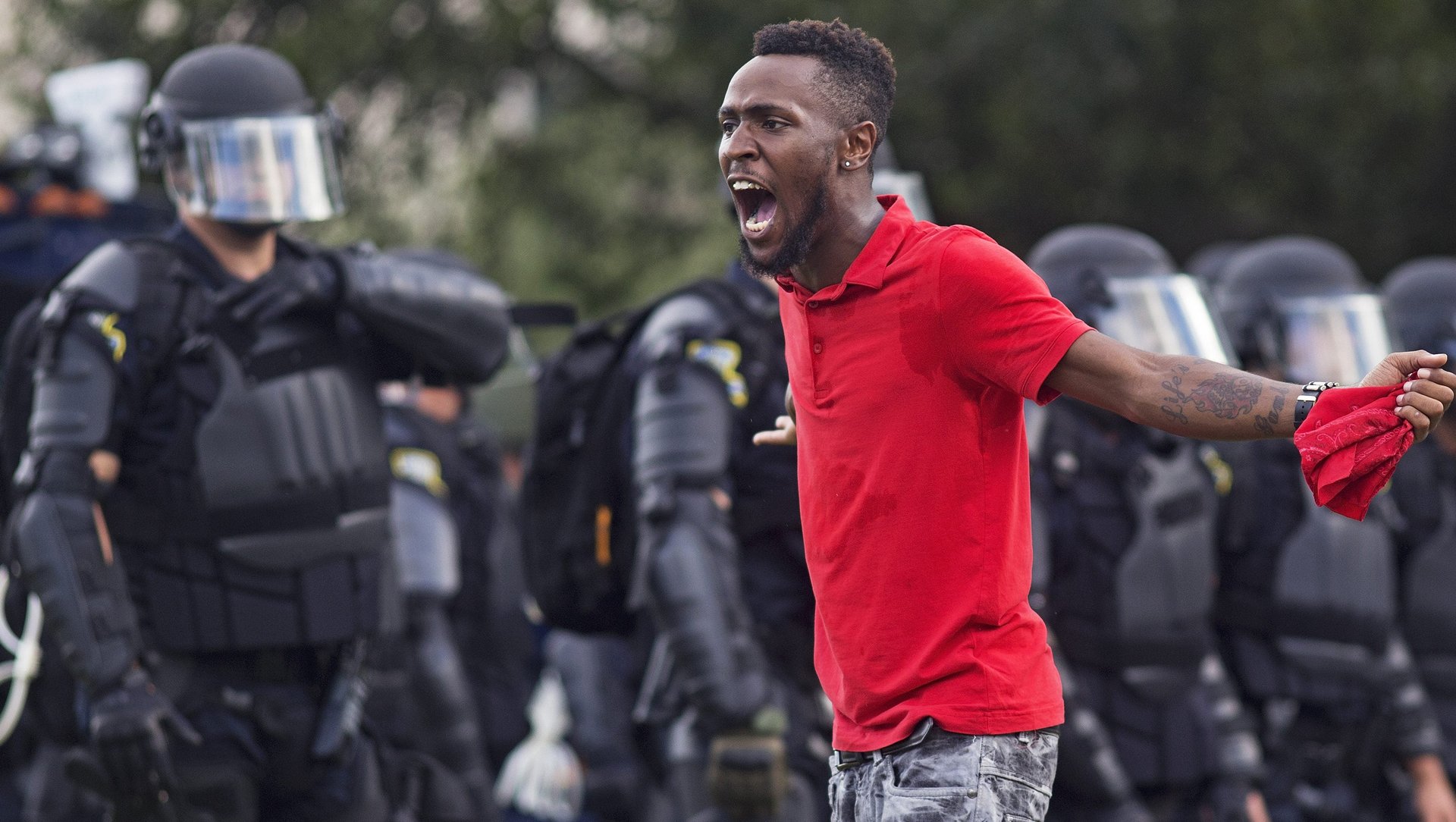Why is it so hard for the US government to prosecute police who kill?
US prosecutors will not bring civil-rights charges against two white police officers in the fatal shooting of Alton Sterling, a black man in Baton Rouge, Louisiana, outside a convenience store. The 2016 killing sparked widespread protests.


US prosecutors will not bring civil-rights charges against two white police officers in the fatal shooting of Alton Sterling, a black man in Baton Rouge, Louisiana, outside a convenience store. The 2016 killing sparked widespread protests.
The decision on Wednesday (May 3), criticized by advocates, comes as the Department of Justice under Jeff Sessions considers rolling back Obama-era reforms aimed at holding police accountable.
But even under the previous administration, federal civil-rights prosecutions against police officers were rare—because the bar set for charges is set so high.
Between 1995 and 2015, according to a report from the the Pittsburgh Tribune-Review, nearly all—a whopping 96%—of the civil-rights complaints against law enforcement got turned down by US attorney’s offices around the country. The few cases that resulted in federal convictions in the past included the Los Angeles officers acquitted on state charges in the brutal beating of Rodney King in 1991. Just a day before the Sterling decision, Michael Slager, the South Carolina officer who fatally shot unarmed motorist Walter Scott in the back in 2015, pleaded guilty to civil-rights charges as part of a deal.
What is required for civil-rights charges
“Prosecutors must establish beyond a reasonable doubt that a law enforcement officer acted willfully to deprive an individual of a federally protected right,” the Department of Justice said in a statement announcing its decision regarding the two officers, Blane Salamoni and Howie Lake II, involved in the death of Sterling. In this case, the right at issue was the Fourth Amendment’s protection against “unreasonable seizure,” which includes unreasonable force by police.
The statement shows exactly why it’s so hard to bring charges in a case like this. For one, prosecutors have to prove that the use of force was not “objectively reasonable” in the given circumstances. “The standard is sufficiently vague that it’s very hard to prove, especially beyond reasonable doubt,” said Barry Friedman, law professor and director of New York University’s Policing Project. What is “objectively reasonable,” a standard determined by a 1989 Supreme Court ruling, use of force may be vastly different for different people.
This approach only looks at the moment of use of force, Friedman said. It “doesn’t move beyond ten frames beyond that moment,” to what happened before, what could have been done to avoid the situation. He suggests that if police had better, clearer use-of-force policies that “ask a lot of questions about what else you could have done,” officials wouldn’t have to turn to the vague constitutional standards that make these cases so hard to prosecute.
The highest hurdle to clear
The other component is the officer’s “willfulness,” or intent to violate someone’s constitutional right. “This high legal standard–one of the highest standards of intent imposed by law–requires proof that the officer acted with the specific intent to do something the law forbids. It is not enough to show that the officer made a mistake, acted negligently, acted by accident or mistake, or even exercised bad judgment,” the DOJ says.
As the department itself admits, this is a nearly impossible standard to hold a case to. The NAACP said in a statement that the standard is “deeply flawed” and that it “frustrates the meaning of the federal statute designed to protect against the deprivation of rights by officers of the state.”
Obama’s attorney general Eric Holder called for lowering this standard, but the push went nowhere, and this is unlikely to change under the Trump administration. The Sterling case now heads to state prosecutors, who will determine whether to charge the two officers with a crime.